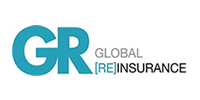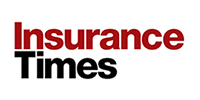Tension between agility and oversight sits at the heart of the MGA model’s future, writes Charles Rowley, director at DA Strategy

Business handled by Managing General Agents (MGAs) surged to almost $100bn in premiums in 2024, according to Gallagher Re.
Fronting carriers, the essential conduits that allow MGAs to access reinsurance capital, have expanded even more rapidly, with premium growth in excess of 20% in 21 of the last 24 quarters. Collectively, they generated nearly $28bn in gross written premiums last year, up 26% over 2023.
The scale of this growth underscores the structural role MGAs and their fronting partners now play in the property and casualty market, representing close to 10% of global premium volume. This growth, in turn, is also fuelling the strong demand from both underwriting talent and investors for nimble, capital-efficient platforms.
At their best, MGAs embody speed and flexibility. By working directly with reinsurers via established fronting arrangements, they can often launch quickly to underwrite and bind policies in niche and underserved markets faster than traditional carriers, unencumbered by legacy systems or cumbersome internal governance.
Specialist expertise, whether in cyber, renewable energy, marine or casualty programmes or many other classes, can be deployed to seize opportunities with precision. For reinsurers, MGA partnerships can offer reinsurers a streamlined route into new segments without the cost of building internal teams, though acquisition cost is always a consideration.
But such rapid expansion invites scrutiny. S&P Global Ratings has described the rise of MGAs as a “double-edged sword.”
Their report highlights how reliance on external underwriting entities may expose reinsurers to governance and alignment risks, particularly as private equity investment and broker-owned MGAs increase competitive pressure.
While MGAs bring talent and agility, they can also encourage growth-driven behaviour that is misaligned with reinsurer profitability goals. Setting the right alignment in place at the beginning is a crucial consideration.
For credit analysts, this is a material consideration. S&P warns that reinsurers overly dependent on MGA platforms may face competitive positioning weaknesses in its ratings analysis.
The lack of direct oversight creates vulnerabilities ranging from underwriting discipline to fraud and incentive misalignment.
In short, the very characteristics that fuel MGA growth, independence, speed, and entrepreneurialism, can also heighten the need for strong governance and alignment mechanisms.
This tension between agility and oversight sits at the heart of the MGA model’s future. Incubating successful MGAs requires more than capital and distribution agreements.
It requires operational excellence and regulatory frameworks that can scale across geographies and classes, while maintaining robust governance standards. Investors, carriers, and reinsurers are increasingly discerning: they want partners that can combine innovation with discipline.
Europe is emerging as a key theatre for this next phase of MGA development. The ability to leverage a single licence across 27 jurisdictions creates an efficient platform for multi-country growth. Markets such as the Netherlands, Spain, Italy, and Poland are developing supportive ecosystems for the MGA model, complementing established hubs in the UK, Germany, and France.
Though of course understanding and developing relationships with distribution is a key consideration. Regulatory oversight is also intensifying, with both UK and EU carriers anticipating greater scrutiny of MGA operations in coming years. This makes regulatory readiness and operational maturity essential for MGAs seeking long-term partnerships.
At DA Strategy, we are seeing particular momentum in European scaling. The market is moving beyond single-line, single-territory programs towards multi-class, multi-territory platforms designed for longevity.
These businesses require structured incubation, governance “umbrellas,” and alignment with both carrier and regulatory expectations. Those that can balance entrepreneurial speed with disciplined oversight and quality distribution are best placed to become tomorrow’s market leaders.
The growth trajectory of MGAs and their fronting partners is undeniable. But as the sector matures, the challenge is to convert expansion into sustainable value. Speed and flexibility have brought MGAs to this point; robust incubation, governance, and regulatory alignment will determine their role in reshaping global insurance markets over the decade ahead.
By Charles Rowley, director, DA Strategy










No comments yet